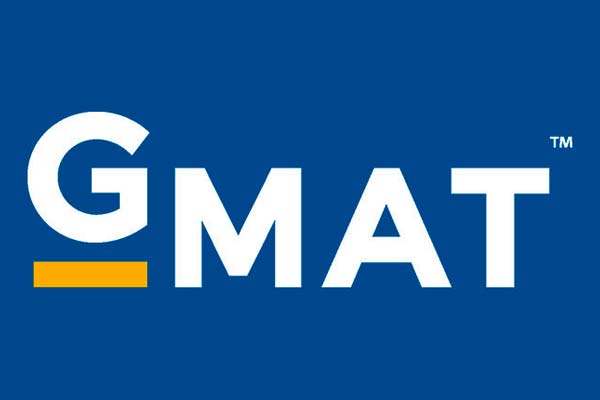What Is a Good GMAT Score: A Clear and Neutral Explanation
The GMAT is a standardized test business schools use to assess applicants’ readiness for their MBA programs. A good GMAT score is an essential component of the application process.
The question of what is a good GMAT score is one that prospective students often ask as they prepare for the exam.
The answer to what is a good GMAT score is not a straightforward one. It depends on the particular business school that you are applying to, as well as your overall application. However, in general, a good baseline GMAT score is around 650.
Top 10 business schools usually expect GMAT scores of 720 or above. The GMAT class profiles of your prospective schools will usually provide you with the average GMAT of incoming students. This average will give you a good idea of where you might fit relative to other applicants.
Understanding GMAT Score
The GMAT exam is scored on a scale of 200 to 800, with a total score that is an average of the scores of the four test sections: Quantitative, Verbal, Integrated Reasoning, and Analytical Writing.
Two-thirds of test takers score between 400 and 800, and the average score among all test takers in the past three years is about 568.
Each section of the GMAT has its score, and test takers can see their unofficial scores immediately after completing the exam. They will then have an opportunity to accept or cancel those scores.
The Analytical Writing Assessment section is scored from 0 to 6 in half-point increments, and the Integrated Reasoning section is scored from 1 to 8 in one-point increments. The Quantitative and Verbal sections are each scored from 0 to 60 in one-point increments.
GMAT score reports include a total score, section scores, and percentiles. Percentiles show the percentage of test takers who scored lower than the test taker in a particular section or overall.
Percentile rankings are arguably even more important than scores when applying for MBA programs, as they compare a test taker’s performance to their peers.
What Constitutes a Good GMAT Score
A good GMAT score meets the requirements of the MBA program the applicant is interested in. Most MBA programs have a minimum score requirement, and applicants should aim to score above this minimum to be considered competitive.
🌟 Hey Students! 🚀 Ready for the ultimate experience? Join us on Studentsinside.com's Facebook, YouTube, WhatsApp, and LinkedIn. Click now for tips, fun, and success vibes! 🌈✨ #StudentLife #JoinUs
However, a good GMAT score can vary depending on the program and the applicant’s profile.
The average GMAT score for test-takers in the past three years is around 568. However, this score may not be sufficient for admission to top MBA programs.
A score of 650 or higher is generally considered a good starting benchmark for a high GMAT score, as it usually hovers around the 75th percentile ranking spot, which is a solid place relative to other applicants. A score of 700 or higher is considered excellent and can make an applicant stand out.
It is important to note that the GMAT is only one aspect of an applicant’s profile that business schools consider when making admissions decisions.
Other factors, such as work experience, academic achievements, and extracurricular activities, also play a significant role. Therefore, applicants should aim to balance their GMAT score with other aspects of their profile.
Applicants should also consider their target schools’ average GMAT scores and percentile rankings. For example, if a target school’s average GMAT score is 700, applicants should aim to score at least 20 points higher to be considered competitive.
Similarly, if a target school’s percentile ranking is in the 90th percentile, applicants should aim to score in the 90th percentile or higher to be considered competitive.
Role of GMAT Score in Business School Admission
The GMAT score plays a crucial role in the admission process of business schools. Business schools use GMAT scores to evaluate applicants’ potential to succeed in their MBA programs. The GMAT score is one of the key criteria that admissions officers use to determine whether applicants are a good fit for their MBA program.
Business schools use GMAT scores in combination with other factors, such as work experience, academic record, and personal achievements, to evaluate the overall potential of an applicant. The GMAT score is an objective measure of an applicant’s academic potential and is used to compare applicants from different academic backgrounds.
The GMAT score is also used to determine the merit scholarship business schools offer. A high GMAT score can increase an applicant’s chances of receiving a merit scholarship, significantly reducing the cost of attending a business school.
The acceptance rate of business schools is highly competitive, and a high GMAT score can improve an applicant’s chances of being accepted. Business schools receive many applications from highly qualified candidates, and the GMAT score can help admissions officers differentiate between applicants.
GMAT Score and Percentiles Breakdown
The GMAT is a computer-adaptive test that assesses the test taker’s verbal, quantitative, analytical writing, and integrated reasoning skills. According to GMAC, the total GMAT score ranges from 200 to 800, with a median score of 551.94.
The score is based on the number of questions answered correctly, the difficulty level of the questions, and the time taken to answer them.
The GMAT score breakdown is as follows:
- Verbal Score: The verbal section of the GMAT assesses the test taker’s ability to read and comprehend written material, reason and evaluate arguments, and correct written material. The verbal score ranges from 0 to 60, with an average score of 27.51.
- Quantitative Score: The quantitative section of the GMAT assesses the test taker’s ability to reason quantitatively, solve quantitative problems, and interpret graphic data. The quantitative score ranges from 0 to 60, with an average score of 41.3.
- Integrated Reasoning Score: The integrated reasoning section of the GMAT assesses the test taker’s ability to analyze data presented in multiple formats and sources. The integrated reasoning score ranges from 1 to 8, with an average score of 4.65.
- Analytical Writing Assessment (AWA) Score: The AWA section of the GMAT assesses the test taker’s ability to analyze and evaluate arguments and to communicate ideas in writing. The AWA score ranges from 0 to 6, with an average score of 4.43.
The GMAT score percentiles indicate the percentage of test takers who scored lower than the test taker on the GMAT. For instance, a test taker who scores in the 80th percentile scored higher than 80% of all test takers. The following table shows the GMAT score percentiles:
| GMAT Score | Percentile |
|---|---|
| 800 | 99 |
| 790 | 99 |
| 780 | 99 |
| 770 | 98 |
| 760 | 96 |
| 750 | 95 |
| 740 | 92 |
| 730 | 88 |
| 720 | 86 |
| 710 | 83 |
| 700 | 80 |
| 690 | 75 |
| 680 | 71 |
| 670 | 67 |
| 660 | 63 |
| 650 | 60 |
| 640 | 56 |
| 630 | 53 |
| 620 | 49 |
| 610 | 45 |
| 600 | 41 |
| 590 | 38 |
| 580 | 34 |
| 570 | 31 |
| 560 | 28 |
| 550 | 25 |
| 540 | 22 |
| 530 | 19 |
| 520 | 17 |
| 510 | 14 |
| 500 | 12 |
| 490 | 10 |
| 480 | 8 |
| 470 | 7 |
| 460 | 5 |
| 450 | 4 |
| 440 | 3 |
| 430 | 2 |
| 420 | 2 |
| 410 | 1 |
| 400 | 1 |
| 390 | 1 |
| 380 | 1 |
| 370 | 1 |
| 360 | 1 |
| 350 | 1 |
| 340 | 1 |
| 330 | 1 |
| 320 | 1 |
| 310 | 1 |
| 300 | 1 |
| 290 | 1 |
| 280 | 1 |
| 270 | 1 |
| 260 | 1 |
| 250 | 1 |
| 240 | 1 |
| 230 | 1 |
| 220 | 1 |
| 210 | 1 |
| 200 | 1 |
How to Improve Your GMAT Score
Improving your GMAT score requires effective studying and targeted practice. One of the most important things you can do is identify and improve your weaknesses. This will help you maximize your study time and make the most progress towards your goal score.
Many GMAT prep resources, including practice tests and study materials from Kaplan and Menlo Coaching, are available. These can be valuable tools in helping you improve your score.
Practice tests can help you identify areas where you need to improve, while study materials can give you the knowledge and skills you need to succeed on the exam.
In addition to studying specific content areas, it’s also important to develop critical thinking skills and quantitative reasoning abilities. These are key skills that will be tested on the GMAT, and improving them can help you perform better on the exam.
To improve your critical thinking skills, try working through practice problems that require you to analyze and evaluate information. This can help you develop the ability to think critically and make logical decisions.
Similarly, practicing quantitative reasoning problems can help you improve your ability to work with numbers and solve complex problems.
How to Get a Perfect 800 Score on the GMAT
Scoring a perfect 800 on the GMAT is no easy feat, but it is possible with the right approach and preparation. Here are some tips on how to achieve that perfect score:
1. Master the fundamentals
To score a perfect 800, you need to have a strong foundation in the basic concepts of both the Quantitative and Verbal sections.
Ensure you thoroughly understand the fundamentals of arithmetic, algebra, geometry, and data analysis for the Quantitative section and grammar, reading comprehension, and critical reasoning for the Verbal section.
2. Practice, practice, practice
Practice is key to achieving a perfect score. Take as many practice tests as you can to get used to the format and timing of the exam. Analyze your performance, identify your weak areas, and then focus on improving them. Use official GMAT preparation materials and resources to ensure you are practicing with high-quality questions.
3. Develop a test-taking strategy
Having a solid test-taking strategy can make a big difference in your score. Learn how to manage your time effectively, eliminate answer choices, and guess strategically when necessary. Develop a plan for each exam section and practice executing it consistently.
4. Stay calm and focused
The GMAT is a high-pressure exam, but staying calm and focused throughout the test is important. Practice relaxation techniques such as deep breathing and positive visualization to help you manage stress. Stay focused on the task at hand and avoid distractions.
Impact of GMAT Score on Top Business Schools
A good GMAT score is essential to admission to a top business school. Admission committees use the GMAT score to evaluate applicants’ academic potential. It is a standardized test that assesses prospective students’ analytical, quantitative, verbal, and writing skills.
Most top business schools have an average GMAT score of 700 or higher. For instance, Stanford GSB has an average GMAT score of 733, while the Haas School of Business at UC Berkeley has an average GMAT score of 727.
However, it is essential to note that a good GMAT score alone does not guarantee admission to a top business school. Other factors such as work experience, academic record, and extracurricular activities are also considered.
Generally, a higher GMAT score increases the chances of admission to a top business school. For example, the average GMAT score of admitted students at Stanford GSB is in the 95th percentile, meaning that most admitted students score above 95% of all test-takers. Similarly, the average GMAT score of admitted students at the Haas School of Business is in the 92nd percentile.
However, it is also worth noting that a lower GMAT score does not necessarily disqualify an applicant from getting admitted to a top business school. Many top business schools have admitted students with GMAT scores below their average. For example, Stanford GSB admitted students with GMAT scores ranging from 600 to 790 in the 2020-2021 academic year.
Targeting the Right Schools with Your GMAT Score
Once you have received your GMAT score, the next step is to determine which schools to apply to. It is important to remember that a good GMAT score is just one factor that schools consider when making admission decisions. Other factors include your undergraduate GPA, work experience, essays, and letters of recommendation.
When targeting schools, MBA applicants should consider their GMAT score relative to the average GMAT score of incoming students. This will help determine if a school is a target, reach, or safety school.
A target school is one where an applicant’s GMAT score falls within the range of the average GMAT score of incoming students. A reach school is one where an applicant’s GMAT score is below the average GMAT score of incoming students, and a safety school is one where an applicant’s GMAT score is above the average GMAT score of incoming students.
It is important to note that while a high GMAT score can increase an applicant’s chances of admission to a school, it is not guaranteed.
Admissions committees consider that strong essays, letters of recommendation, and work experience can offset the application and a low GMAT score.
When researching schools, MBA applicants should also consider the school’s reputation, location, and program offerings. It is important to find a school that is a good fit for your career goals and personal preferences.
Considerations Beyond GMAT Score
Undergraduate GPA
The undergraduate GPA is another critical factor that business schools consider. A high GPA demonstrates academic excellence and the ability to handle rigorous coursework.
However, a low GPA does not necessarily disqualify an applicant. Business schools consider the difficulty of the applicant’s undergraduate coursework and the institution’s reputation.
Application and Essay
The application and essay allow applicants to demonstrate their unique qualities and experiences. Admissions committees seek applicants who can contribute to the school’s community and culture. A well-written essay can showcase an applicant’s personality, communication skills, and leadership potential.
Test-takers
The GMAT is a computer-adaptive test, meaning that the difficulty of the questions adapts based on the test-taker’s performance. Therefore, two test-takers with the same score may have answered different questions. Business schools consider the percentiles of the applicant’s score to compare their performance to other test-takers.
Test Day
Test-takers should consider several factors before test day to ensure they perform their best. They should familiarize themselves with the test format, take practice tests, and manage their time effectively. Additionally, test-takers should arrive at the testing center early, well-rested, and focused.
Gender
Studies have shown that men score higher than women on the GMAT. However, business schools do not discriminate based on gender. Admissions committees evaluate each applicant holistically and consider all factors, including gender.
Logic
The GMAT assesses analytical, quantitative, and verbal reasoning skills. However, business schools value creativity, critical thinking, and problem-solving skills. Applicants can demonstrate these skills through essays, interviews, and work experience.
GMAT Score Calculator and Interpretation
To determine a good GMAT score, it’s essential to understand how the exam is scored and interpreted. The GMAT comprises four sections: Analytical Writing Assessment, Integrated Reasoning, Quantitative, and Verbal. Each section is scored separately, and the scores are then combined to create a total score.
To calculate your GMAT score, you can use a GMAT score calculator. Several are available online, including those provided by the GMAT test makers. These calculators allow you to input your section scores and will calculate your total score for you.
In addition to your total score, it’s also important to consider your percentile rank. This rank compares your score to those of other test-takers and indicates the percentage of test-takers who scored lower than you. For example, if your percentile rank is 80, you scored above 80% of test-takers.
A good GMAT score is typically considered above the 50th percentile, around 550. However, a good score may vary depending on the program or school you are applying to.
It’s essential to research the average GMAT scores of accepted students at your desired program to determine what score you should aim for.








